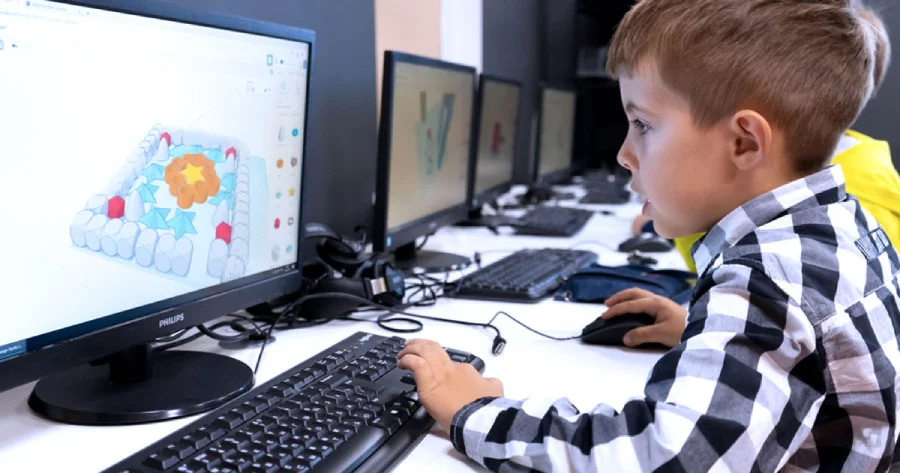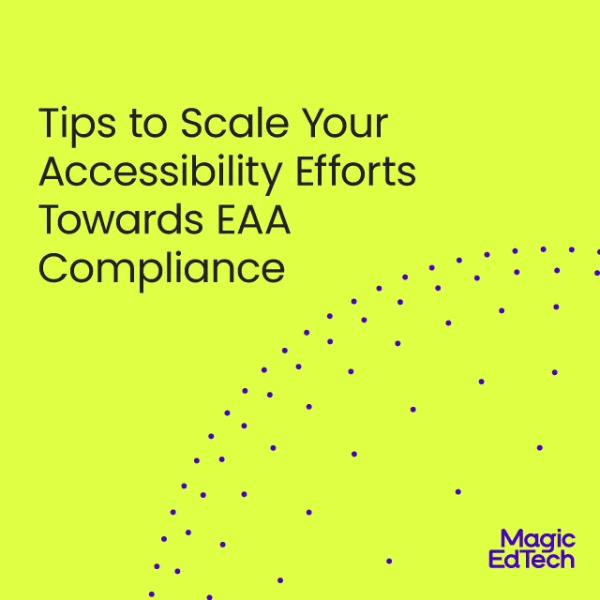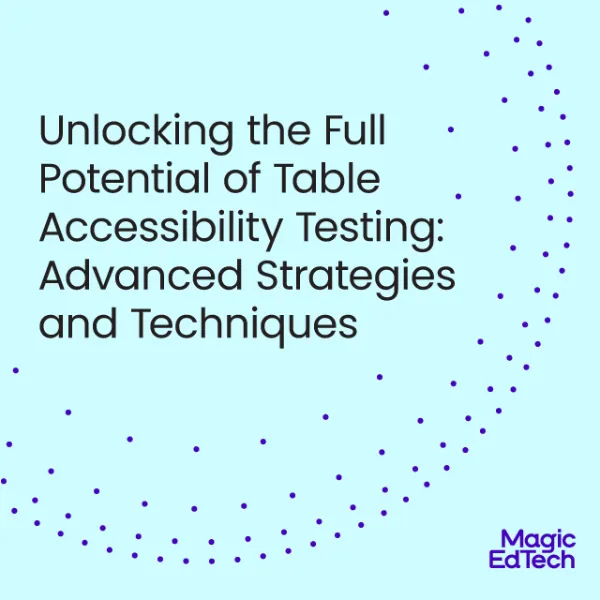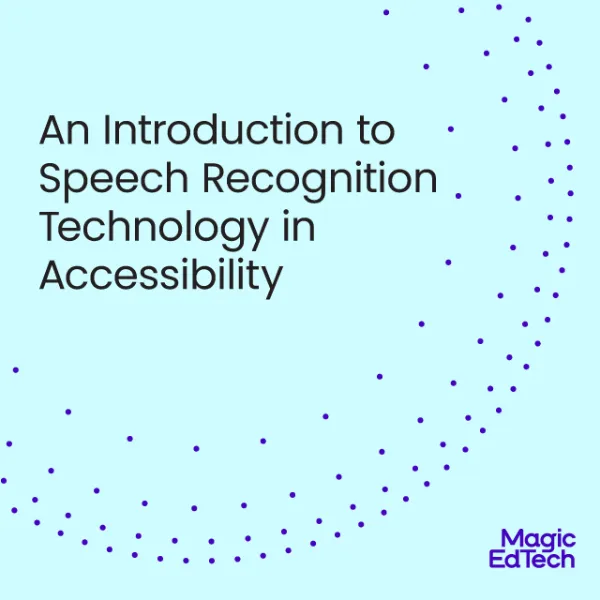Challenge Accepted – Making Educational Games Inclusive
- 4 August, 2023
- Reading Time: 5 mins
Personalized learning experience has been a buzzword long before the advent of Generative AI. They have proven their potential in addressing a range of learning requirements, elevating student engagement, and propelling academic achievements. However, amidst this landscape of educational innovation, a significant facet has often been overlooked – the realm of ‘Inclusive Gaming.’ Despite the immense possibilities, games have traditionally been sidelined by most educational publishers in favor of more conventional approaches.
The reasons behind this avoidance are multifaceted. Historically, educational publishers leaned towards established methods, and Games, with their interactive and dynamic nature, were deemed unconventional and potentially disruptive to the traditional learning environment. Concerns arose regarding the alignment of games with established curricula and learning objectives, leading publishers to err on the side of caution.
Moreover, the perception of games as purely recreational activities rather than potent educational tools also contributed to their exclusion. The prevailing mindset equated learning with seriousness and games with leisure, creating a dichotomy that hindered the adoption of gaming in educational contexts.
However, times have changed, and so have perspectives. The evolution of technology, including the emergence of Generative AI, has brought to light the untapped potential of games in personalized learning. These advancements have enabled the creation of sophisticated, adaptable, and customizable gaming experiences that align seamlessly with learning goals.
The Challenge of Accessibility in Educational Gaming
While the potential of educational gaming is immense, the true impact can only be realized when it is accessible to all learners, regardless of their abilities or disabilities. A study by the National Center for Education Statistics found that 15% of students in the U.S. have a disability. These challenges encompass physical, sensory, cognitive, and language-related issues. Learning disabilities further compound the situation. However, accessible games integrated into the learning curriculum can be a powerful tool for engagement and skill development.
A meta-analysis of 22 studies found that educational games were effective in improving the academic achievement of students with disabilities. Overcoming the challenges of creating accessible games is essential to ensure that educational games cater to the needs of all students. This approach not only fosters an inclusive learning environment but also promotes the acquisition of essential knowledge and abilities. These challenges can be tackled by incorporating ways like:
- Attention to Learners with Disabilities: Educational gaming has the potential to break down traditional barriers and provide a more inclusive and engaging learning experience. By incorporating features such as:
- Multiple Difficulty Levels: Allow players to choose from various difficulty levels to accommodate learners with different skill levels and challenge preferences.
- Modifiable Game Controls: Allow players to customize the game controls, such as remapping keys.
- Visual and Auditory Cues: To convey information and instructions, making the game more accessible to learners with sensory disabilities.
- Promoting Universal Design for Learning (UDL): Inclusive educational gaming aligns with the principles of Universal Design for Learning (UDL), which aims to cater to the diverse needs of all learners.UDL ensures that every learner has access to the same content and learning opportunities, removing barriers and providing a level playing field for all. Some of the aspects in the context of inclusive gaming are:
- Simplified User Interface: Provide a simplified user interface option to reduce cognitive load for learners who may struggle with complex interfaces.
- Progress Tracking and Personalized Feedback: Helping them understand their strengths and areas for improvement.
- Real-World Context and Application: Integrate real-world scenarios and applications to enhance relevance and practical learning experiences.
- Leveraging Assistive Technologies: By integrating the following technical features into educational games, edtech providers can make gaming accessible to all, fostering an inclusive learning environment that empowers learners with diverse abilities and disabilities:
- Screen Reader Compatibility: Ensure that the game interface and text are compatible with screen readers used by individuals with visual impairments.
- Text-to-Speech and Speech-to-Text: Implement text-to-speech functionality for reading in-game text aloud and speech-to-text for voice commands or responses.
- Volume Control and Sound Enhancements: Include volume control options and sound enhancements for players with hearing difficulties.
- Language Localization: Make the game available in multiple languages to cater to players from diverse linguistic backgrounds.
- Cross-Platform Compatibility: Ensure the game can run on various platforms, such as PC, Mac, mobile devices, and gaming consoles, to reach a broader audience.
The Advantage of Accessible Learning Games
The integration of accessibility into learning games emerges as a compelling avenue that extends far beyond the realms of innovation. It’s a strategic move that ushers in a host of advantages for an edtech provider, these include:
- Expansive Market Reach: Making learning games accessible opens doors to a wider audience. Learning providers that tackle this challenge can reach more people and build stronger partnerships.
- Increased User Engagement: The demand for accessibility in educational tools goes beyond guidelines. It’s about creating content that resonates with all types of learners. When edtech providers integrate accessibility seamlessly, they enhance user engagement and satisfaction.
- Compliance with Regulations: Many educational institutions and jurisdictions require digital content, including games, to be accessible to students with disabilities as per laws and regulations. By ensuring accessibility, the edtech providers can remain compliant and avoid legal issues.
- Collaborative Innovation: The journey towards accessibility requires teamwork and sparks innovation. When instructional design, editorial expertise, and technology come together, edtech products not only meet high-quality standards but also enhance the essence of effective learning.
- User-Centered Design: Accessible games showcase the power of user-centered design. Features like closed captioning, alternative text, and inclusive testing practices invite all learners to engage and succeed. This commitment to inclusivity spreads throughout the educational landscape, promoting fairness and empowerment.
The fusion of personalized learning, gaming, and AI offers an unprecedented opportunity to revolutionize how we learn. While traditional educational publishers have hesitated to embrace gaming, the potential benefits for student engagement and academic achievement are undeniable. As we stand at the crossroads of innovation and inclusivity, it’s time to embrace the power of accessible educational gaming to ensure that every learner has an equal opportunity to succeed.
Take the first step towards shaping a brighter educational landscape. Contact us to know how our accessibility experts will ensure your products and services lead the way in creating an inclusive and transformative learning experience.





